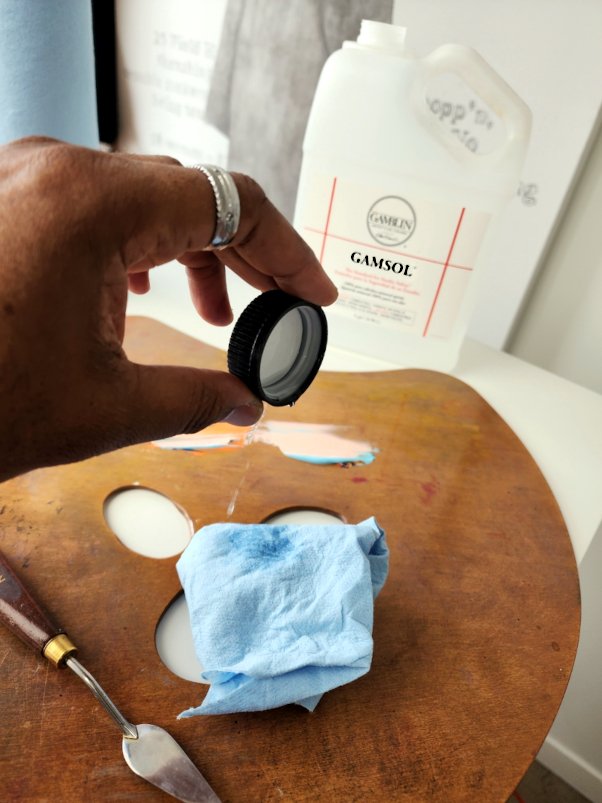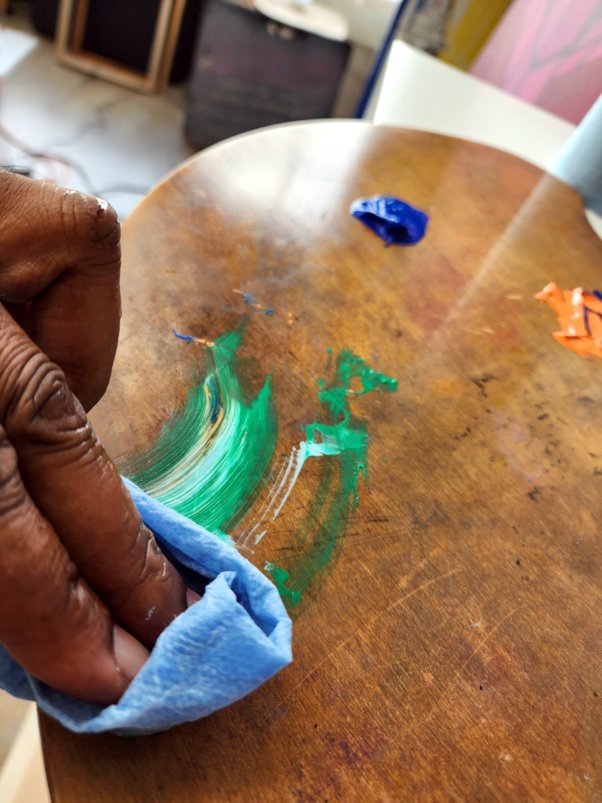Preserving and Maintaining Your Wooden Palette: A Guide for Artists
When it comes to oil painting, the palette is the heart of creativity, where colors blend, ideas flourish, and masterpieces take shape. But how do we care for and preserve this essential tool? In this blog post, we'll delve into the art of maintaining wooden palettes, ensuring their durability and pristine condition for years to come.
Preserving a clean palette is crucial for accurate color representation. A clean palette guarantees that colors remain true, unaffected by residue from previous mixing sessions. With a pristine palette, you can confidently remix colors in subsequent painting sessions, achieving consistent results while staying true to your original color choices. By prioritizing a clean palette, you preserve the essence of your artistic vision, allowing your colors to shine vibrantly and enabling you to create harmonious and cohesive works of art.
Not only does preserving wooden palettes benefit the environment by reducing resource demand and waste, but it also showcases your commitment to sustainability in art. By reusing durable palettes, you conserve timber, lower your carbon footprint, and contribute to a greener artistic practice.
To clean wet oil paint from your palette surface, begin by gently scraping off excess paint with a palette knife. Then, dampen a paper towel or cloth with a suitable solvent or cleaning agent and carefully wipe the remaining paint, ensuring not to damage the palette surface.
Repeat the process as needed until the palette is clean, disposing of the paper towel or cloth responsibly.
Regularly removing excess paint from your palette is crucial to prevent it from drying and becoming stubbornly difficult to remove. By promptly cleaning off wet paint, you prevent it from hardening and adhering to the palette surface, ensuring that future cleaning sessions are more efficient and less time-consuming. This practice also helps maintain a clean working area, allowing you to accurately remix colors and work with a fresh palette in each painting session.
When dealing with dried paint buildup on your palette, you have a couple of effective methods to try. One option is using a scraping tool like a palette knife or a paint scraper to gently remove the dried paint. Remember to be cautious and avoid scraping too hard, as it could potentially damage the wood. Alternatively, opt for eco-friendly alternatives such as vegetable oil or a mixture of mild dish soap and water. Vegetable oil breaks down oil paint effectively while being safe for both you and the environment.
Similarly, a solution of mild dish soap and water can remove paint residues without the need for harsh chemicals. Choosing these natural cleaning solutions not only reduces your exposure to harmful substances but also promotes a safer working environment. To protect the wood and enhance the longevity of your palette, consider "seasoning" it with linseed oil or other suitable mediums.
Start by applying a thin layer of linseed oil or medium to the entire palette surface using a brush or cloth, ensuring coverage of all areas, including the edges. Allow the oil to penetrate the wood for approximately 24 hours, then wipe off any excess oil with a clean cloth. Repeat this process two to three times, allowing sufficient drying time between each coat. This seasoning process nourishes and seals the wood, preventing it from drying out or warping over time. Patience is key, so be sure to allow the oil to fully dry before using your palette for painting.
Regular maintenance and inspection are essential for your wooden palette's longevity. Take the time to regularly inspect it for signs of wear, cracks, or loose components. If you notice any rough areas or splintering, gently sand those spots with sandpaper to ensure a smooth surface. Address any cracks or loose components promptly and your palette will always be in optimal condition. ~




